

A clinical case by StyleItaliano member Dr Nasim Akhatov
Dentists frequently encounter proximal walls restoration issues in their regular work with direct composite restorations of chewing teeth. The effectiveness of restoring the chewing tooth groups’ contact points is dependent on selecting the suitable matrix system and tailoring it to the shape and morphology of the tooth to be replaced. In this case, a simple protocol for everyday posterior direct restorations was highlighted.
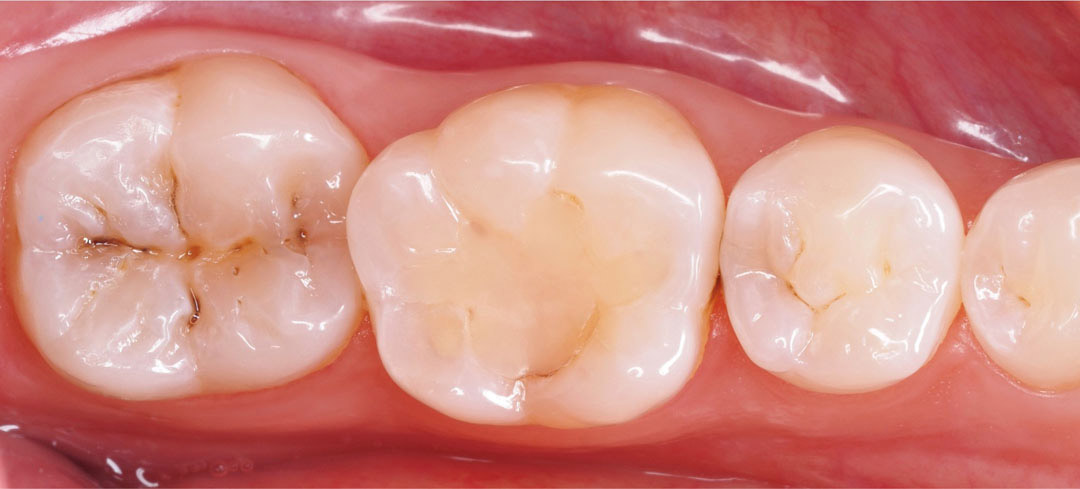
Fig.1
Clinical symptoms indicate a carious lesion on tooth 45 and a failed restoration on tooth 46.
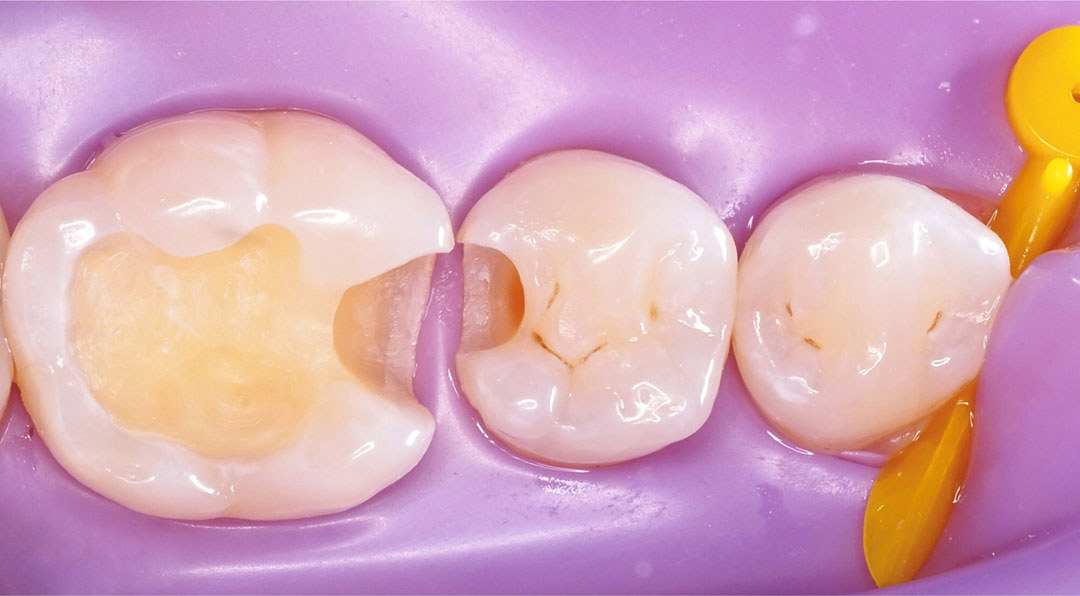
Fig.2
After rubber dam isolation, the old restoration and carious tissues were removed. The correct geometric shape of the cavities was created for better adaptation of the composite. This is done since the modification of the cavity shape reduces the degree of internal loading during composite polymerization.
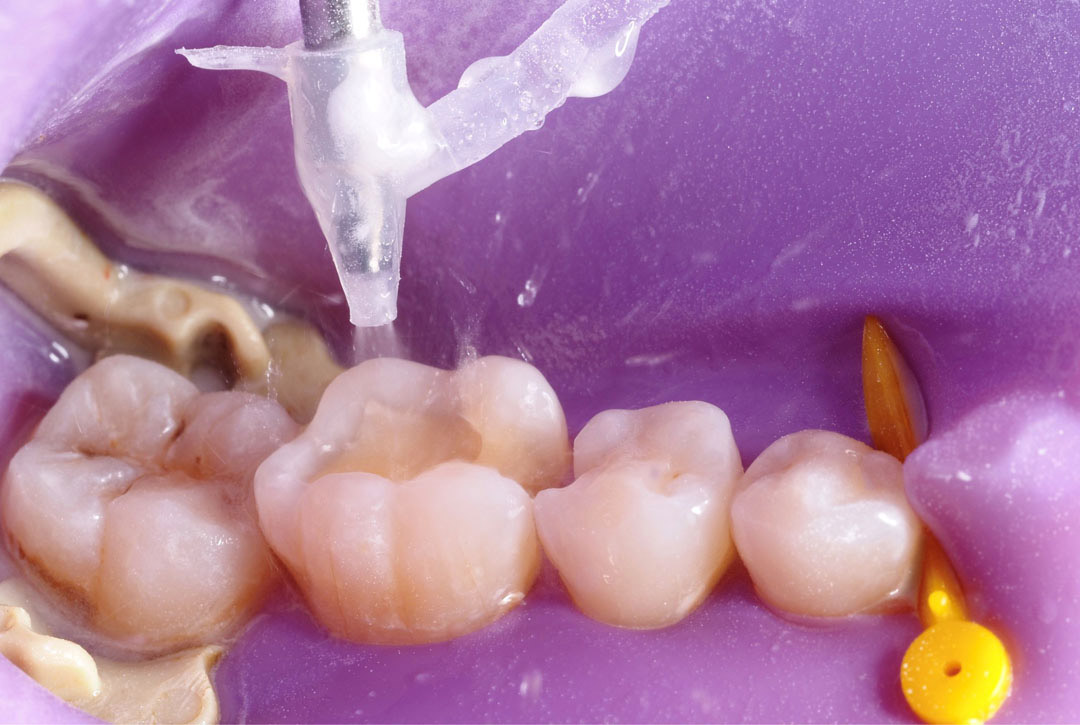
Fig.3
After removing the old filling material and carious tissue, the cavity was cleaned and sandblasted with 29-micron aluminum oxide particles using the AquaCare by Velopex machine.
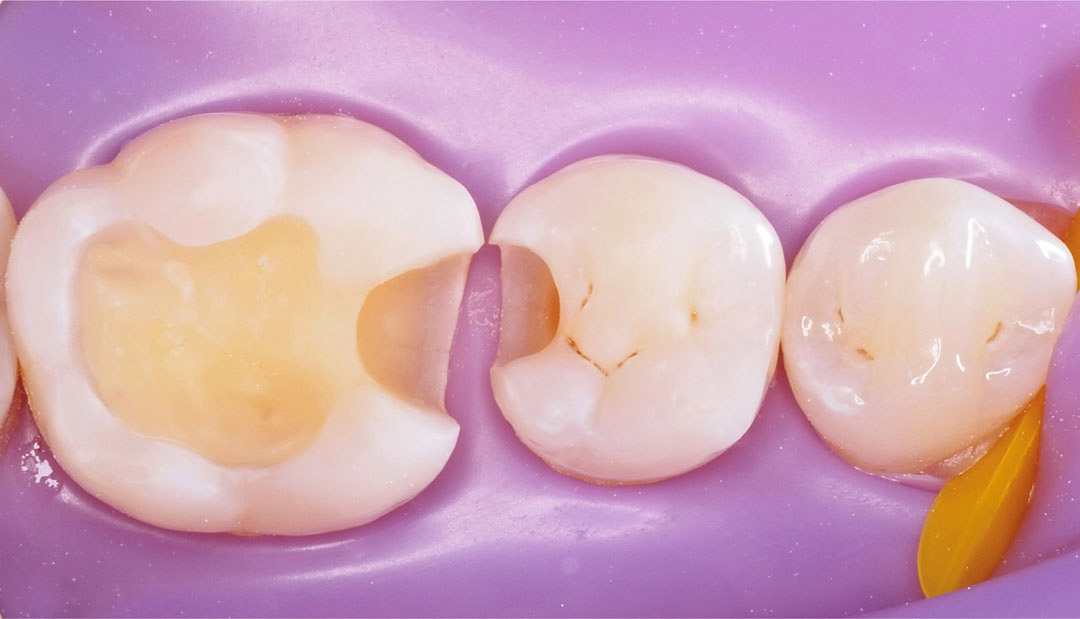
Fig.4
View of the cavity after sandblasting.
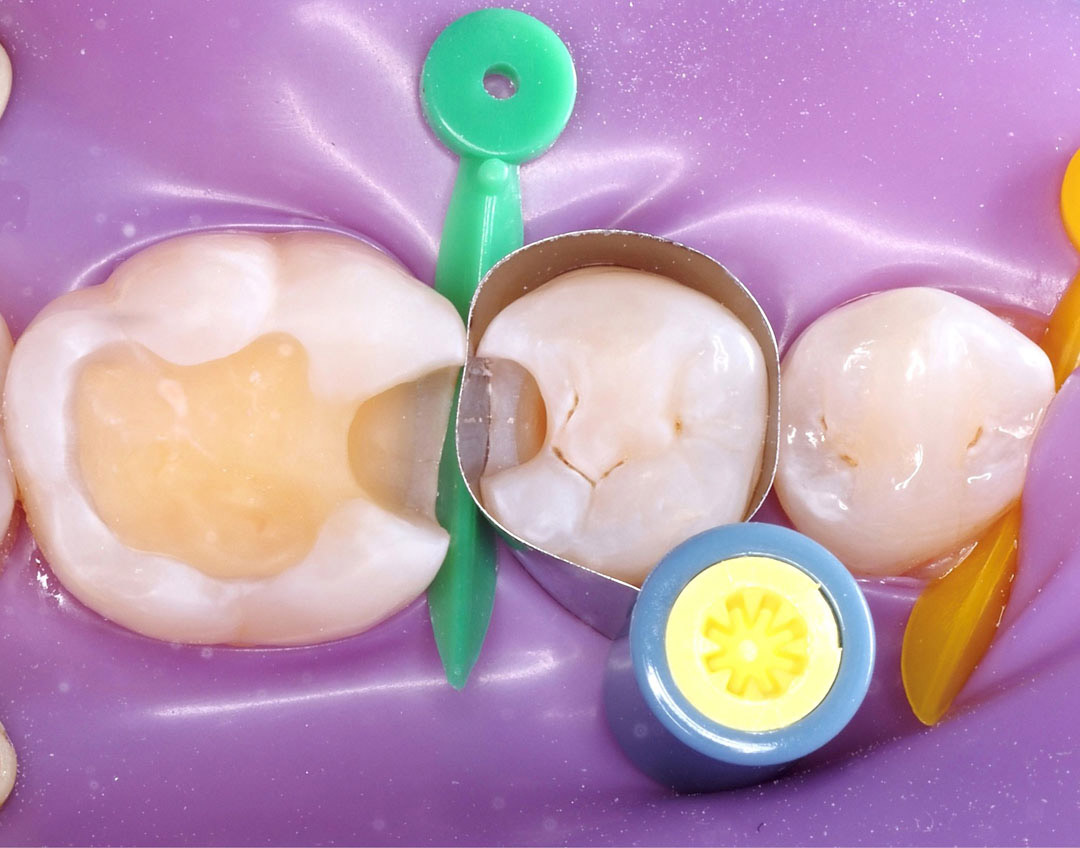
Fig.5
It was decided to restore the proximal surfaces separately.
Starting with tooth 45, the SuperMat by Kerr matrix system was chosen.
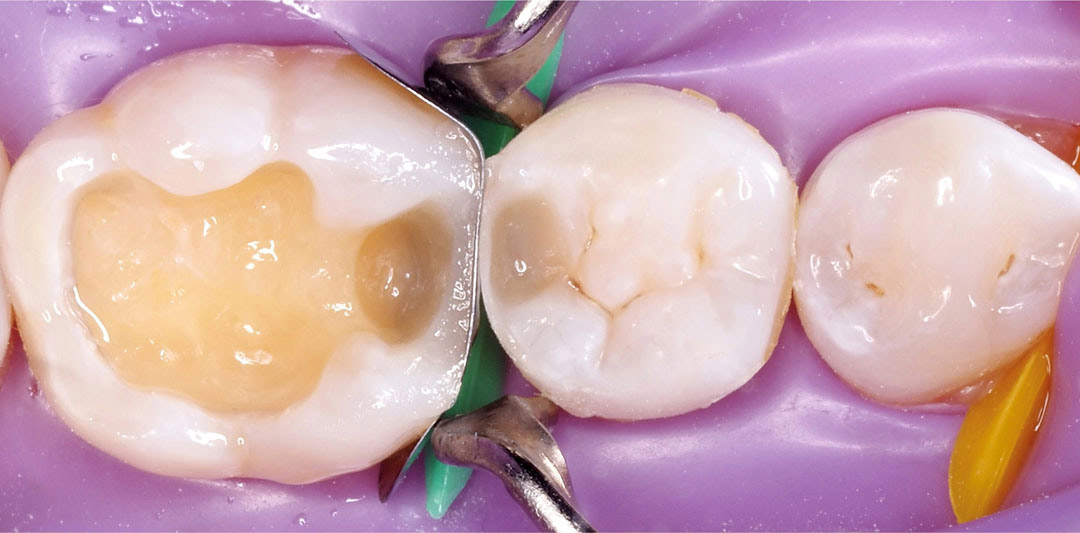
Fig.6
After restoring the proximal surface of tooth 45, the tooth 46 was restored and the matrix was adapted. In this manner, a ring was used to improve the matrix fitting to the proximal surface of the tooth.
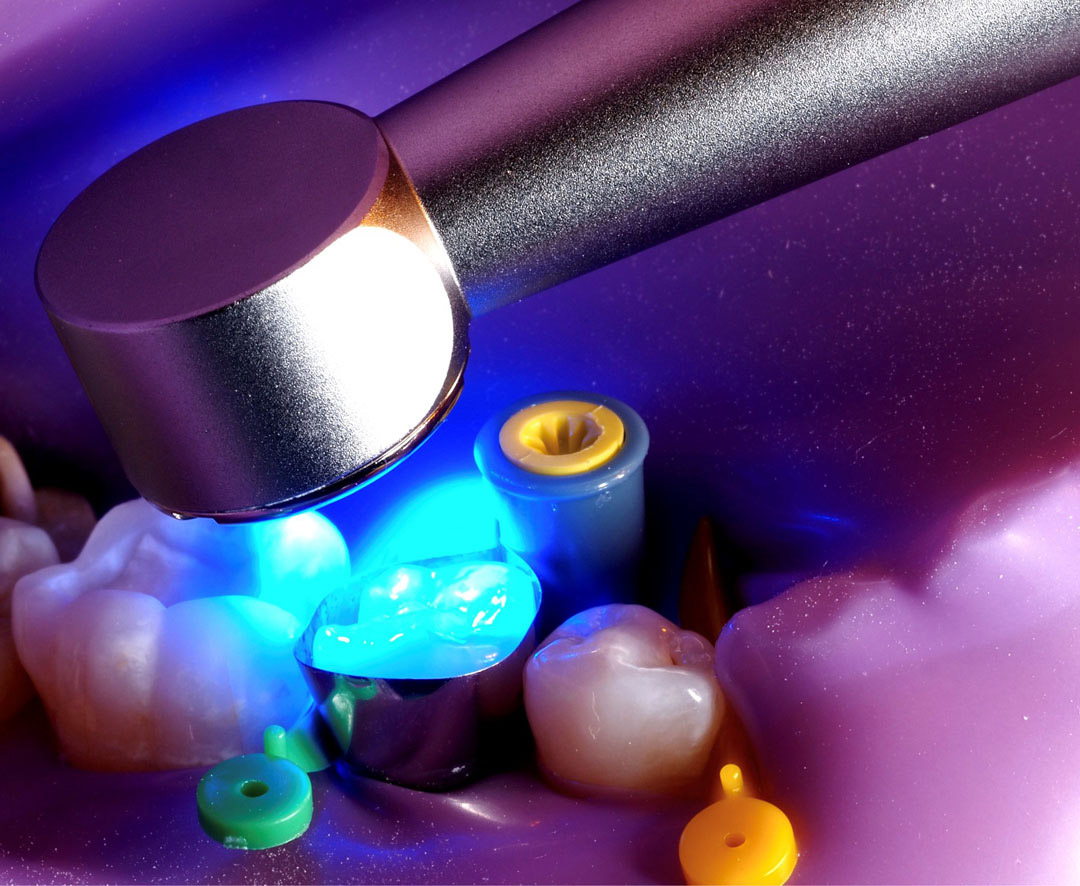
Fig.7
Polymerization of the composite was performed with the Curing Pen by Eighteeth.
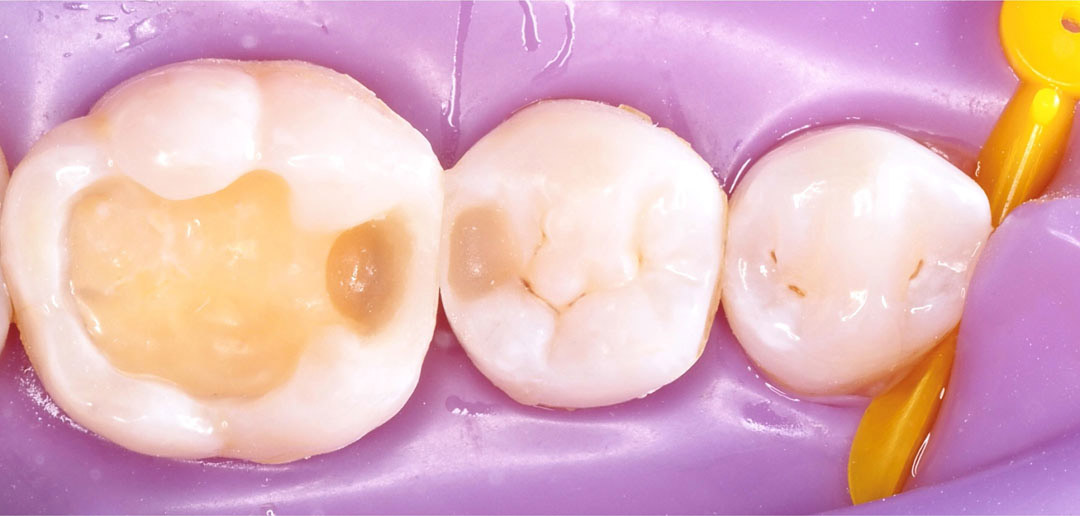
Fig.8
The packable composite was used to restore the proximal walls.
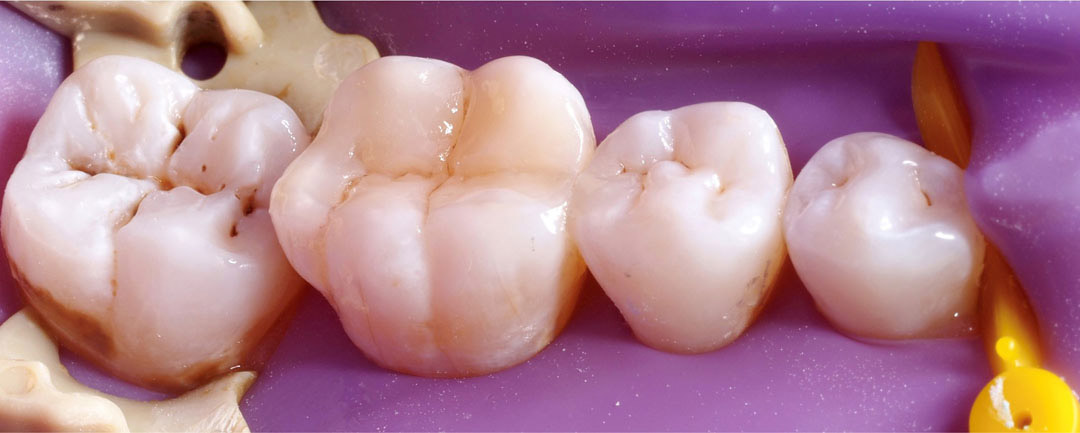
Fig.9
The occlusal surface of the teeth was modeled stage by stage and a beautiful natural appearance was achieved using a packable composite. The fissures were modeled using the LM Fissura instrument (LM Arte kit powered by Styleitaliano) according to the anatomy of the tooth.
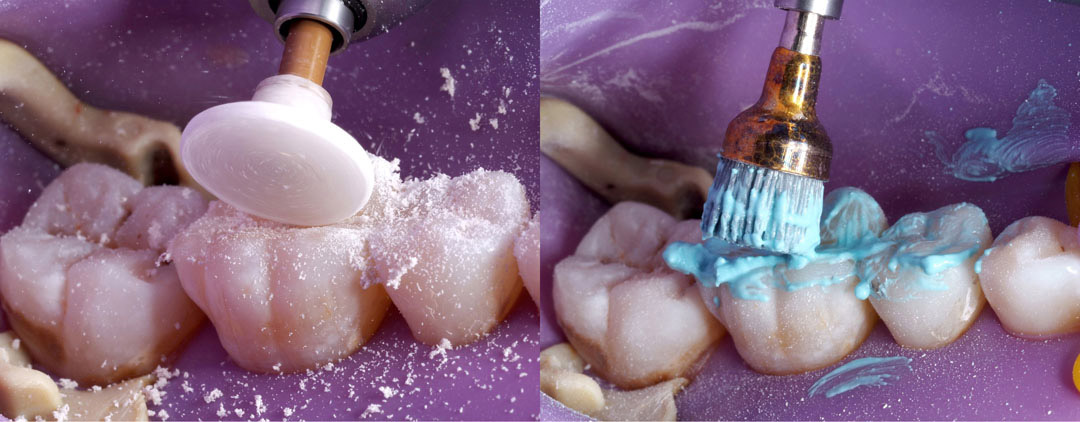
Fig.10
The polishing steps were carried out using polymer cups, brush and polishing paste.
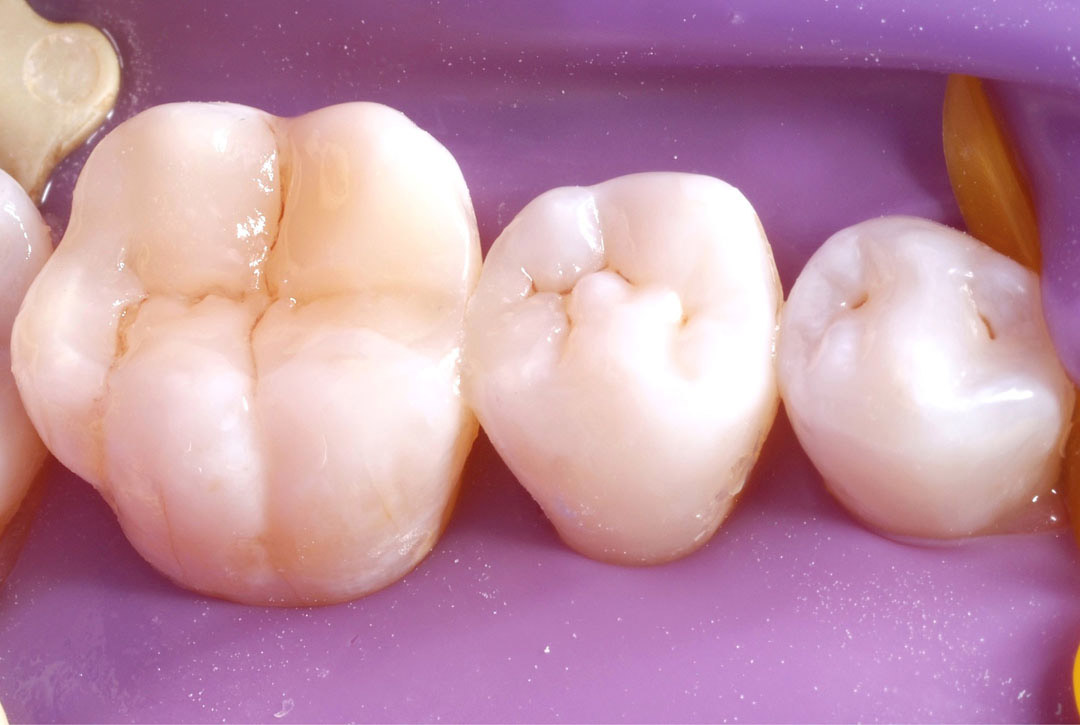
Fig.11
Final result after grinding and polishing the restoration.
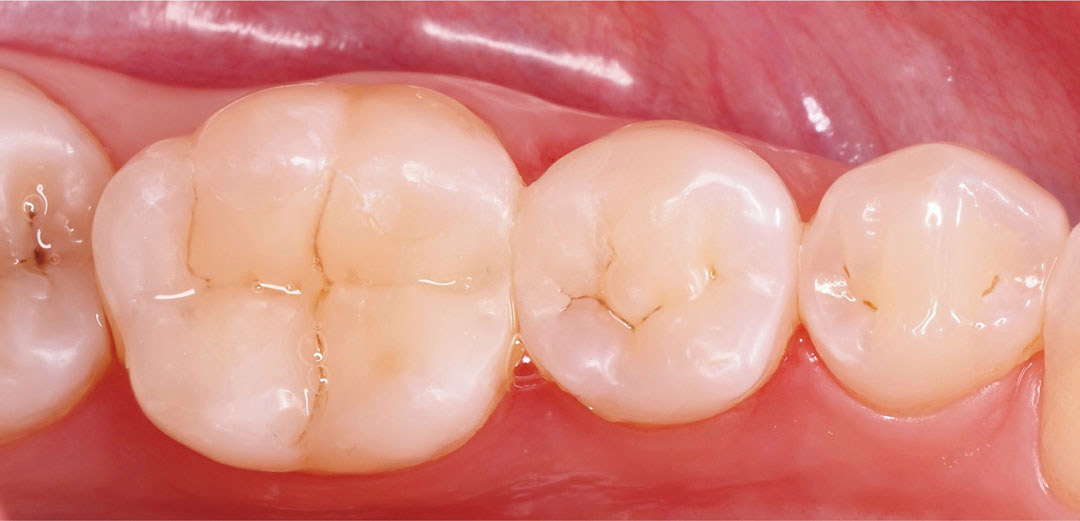
Fig.12
View of the restoration after 1 month.
Conclusions
Restoring the proximal walls and the original anatomical shape of the teeth is very important because each sulcus, fossa and ridge plays their role in functional contacts and movements.
Bibliography
1. Douglas A.Terry, D.D.S. & Willi Geller. Aesthetic & Restorative Dentistry. 2012;96-117.
2. Manauta J, Salat A. Layers An Atlas of Composite Resin Stratification. 2012. Quintessence Pub.
3. Ferraris F. Adhesion, layering, and finishing of resin composite restorations for class II cavity preparations. Eur J Esthet Dent. 2007;2(2):210-21.
Original link: https://www.styleitaliano.org/class-2-posterior-direct-composite-restorations/
Disclaimer:
The third-party literature content referenced in this article is provided solely for the purposes of academic exchange and information sharing. It does not represent our position or endorsement of any technical parameter comparisons (if applicable) mentioned herein. The related data and conclusions are derived from independent research, and we shall not be held liable for the objectivity or accuracy of such content under any legal jurisdiction.